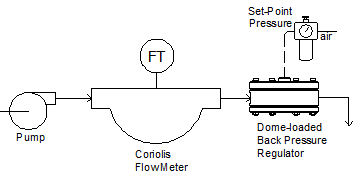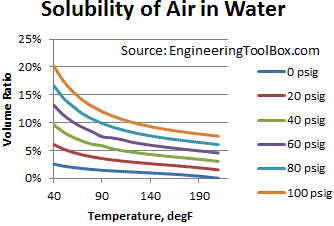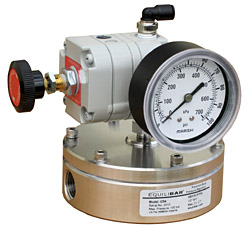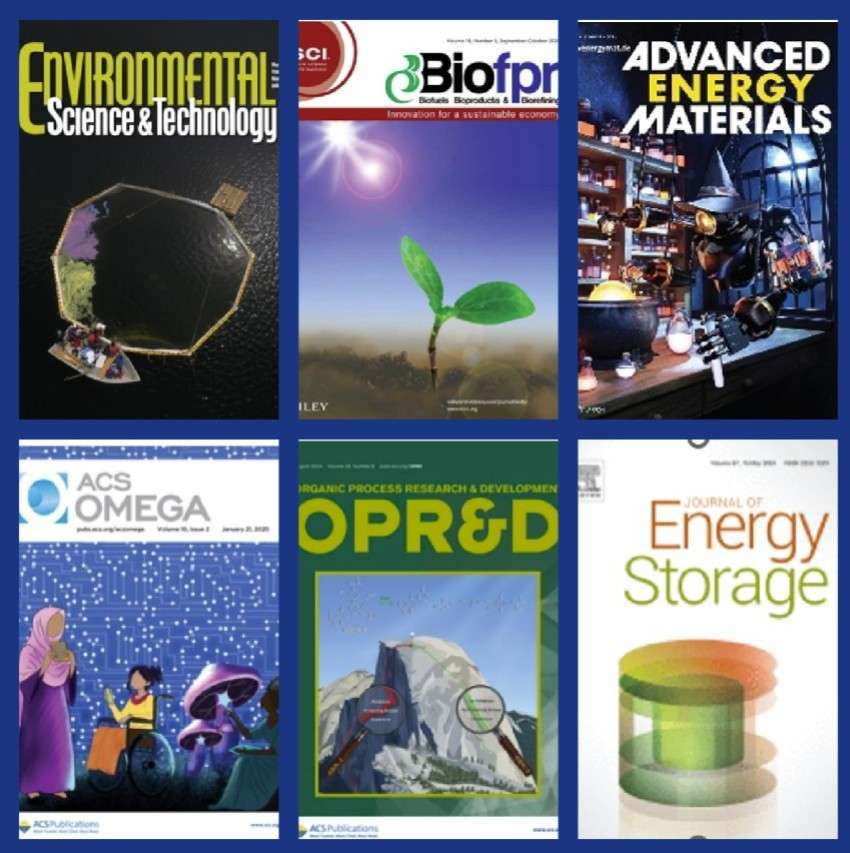Coriolis flow meters function by measuring slight changes in acceleration of the flow tube as the tube is vibrated. Such measurements are highly sensitive to changes in density. In fact, these instruments are able to measure and transmit density as well as mass flow.
One problem that some customers face with their Coriolis flow meter is that of bubble evolution in their flow system upstream and in the flow instrument. Many process fluids can evolve bubbles from the shear of a pump or in the transport of the fluid near atmospheric pressure. When bubbles pass through the sense tube of the mass flow meter, the resulting flow signal can be significantly disturbed. Accurate flow measurements are not possible when there are bubbles with Coriolis flow meters.
Using a Back Pressure Regulator to Inhibit Bubbles

Improving the accuracy of a Coriolis flow meter requires the reduction or elimination of entrained bubbles. One common method to minimize or prevent bubble evolution is to increase the pressure at the outlet of the Coriolis meter. By installing a back pressure regulator downstream of the instrument, gases are more likely to remain in solution, and the volume of small bubbles is minimized.
The schematic above illustrates the placement of the pressure regulator after the flow instrument. Equilibar back pressure regulators use a simple diaphragm design and are compatible with many demanding processes, such as sanitary and highly corrosive applications.
Example: Inhibiting Evolution of Dissolved Air
Oxygen and nitrogen are dissolved in all water solutions in significant quantities and can lead to bubbles when temperature is increased or pressure is decreased. Dissolved O2 is easily measured by a handheld instrument and can be used as a proxy to monitor dissolved gases in general.

Chart showing the variable solubility of air in water, by volume %. Data source: Engineeringtoolbox.com
Pressurized water headers such as municipal or industrial supply headers can deliver dissolved O2 above 13 ppm, especially during cold weather. As this water is processed through piping systems, these dissolved gases can evolve. The chart above shows how a pressurized header of water can absorb or release significant quantities of air as the temperature and pressure are changed. At room temperature, water can dissolve only about 2% by volume at atmospheric pressure. However, by creating back pressure of 40 psig in the piping, the water can retain additional gases in solution, up to about 14% by volume. This additional solubility can help prevent evolution of bubbles in pumps, valves, and other piping components. The stability and accuracy of a Coriolis flow meter may be improved simply by increasing the pressure that the flow meter operates at.
Ask Our Engineers about Preventing Bubbles with Coriolis Flow Meters
Contact an Equilibar application engineer to help find the right back pressure regulator to improve the accuracy of the Coriolis flow meter in your application.

Back Pressure Regulators can be used to prevent bubble formation in Coriolis flow meters


